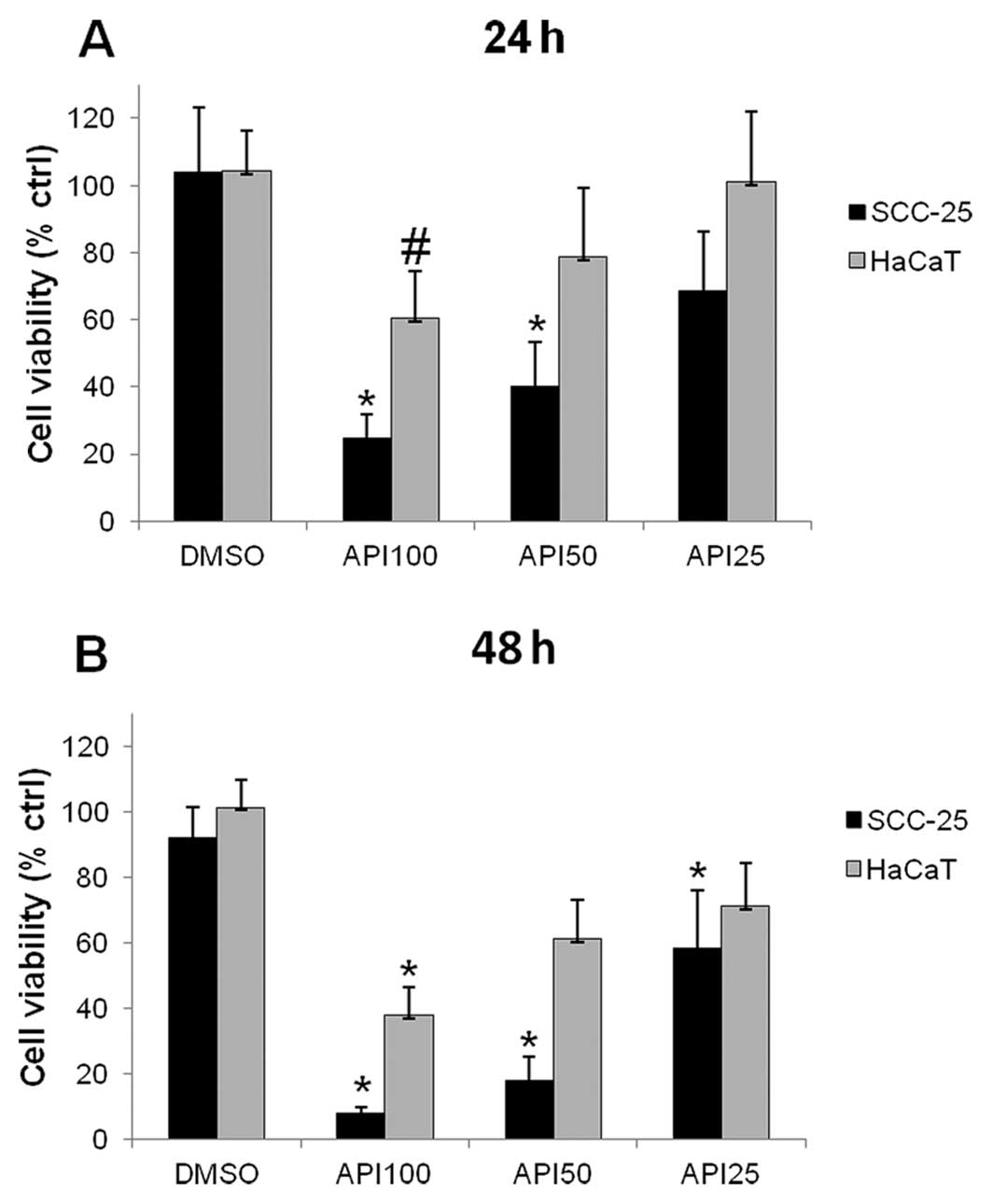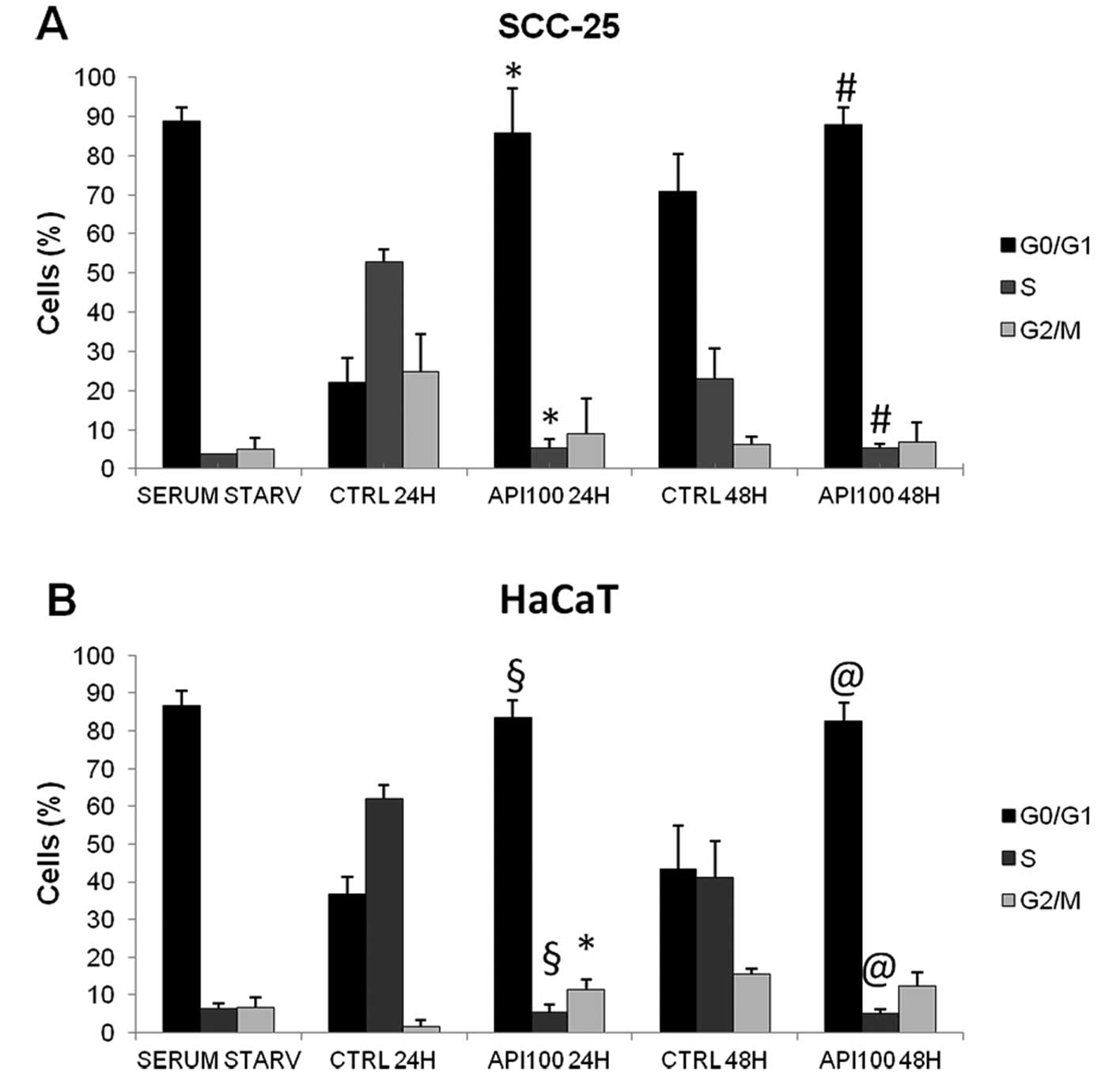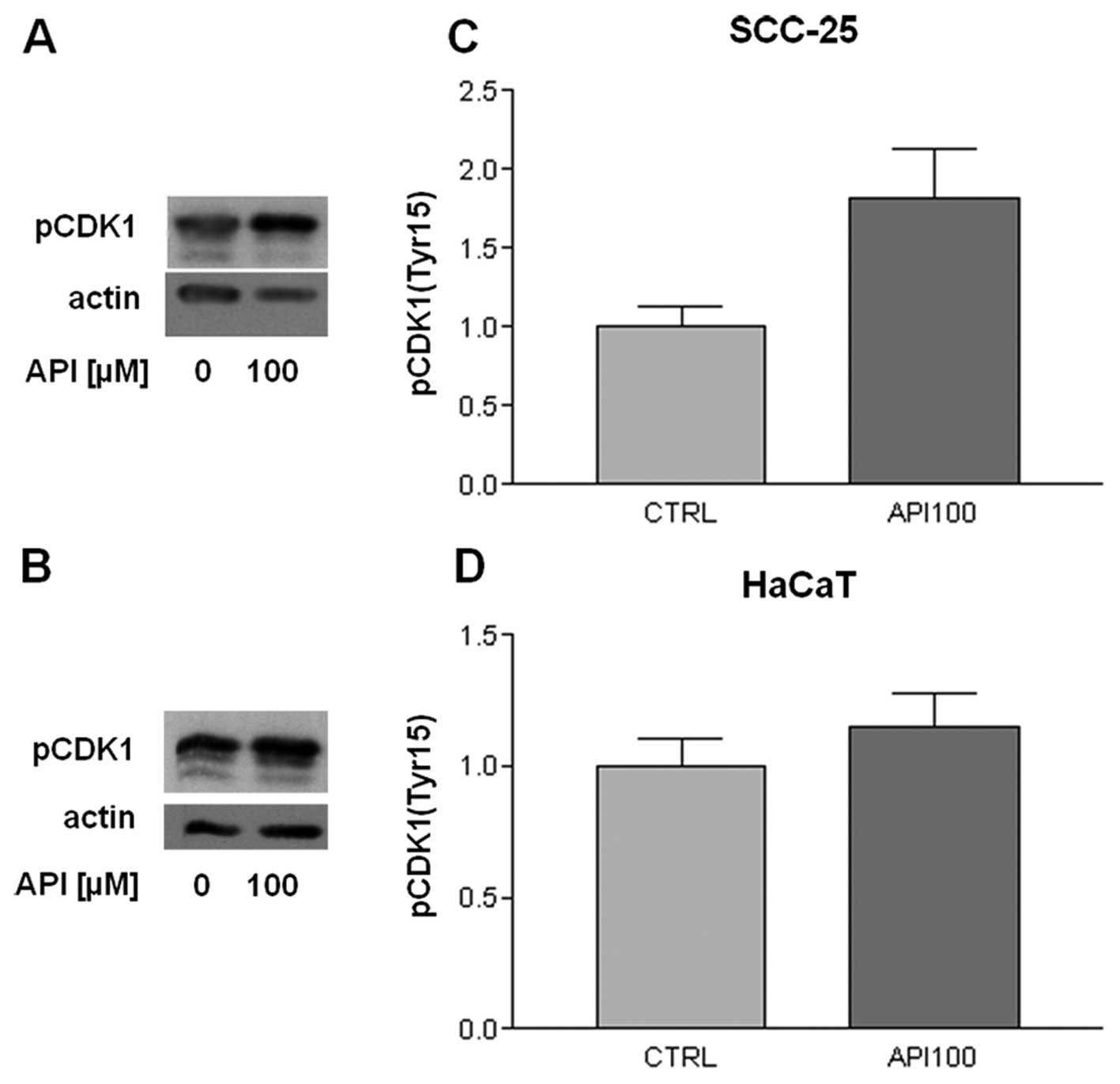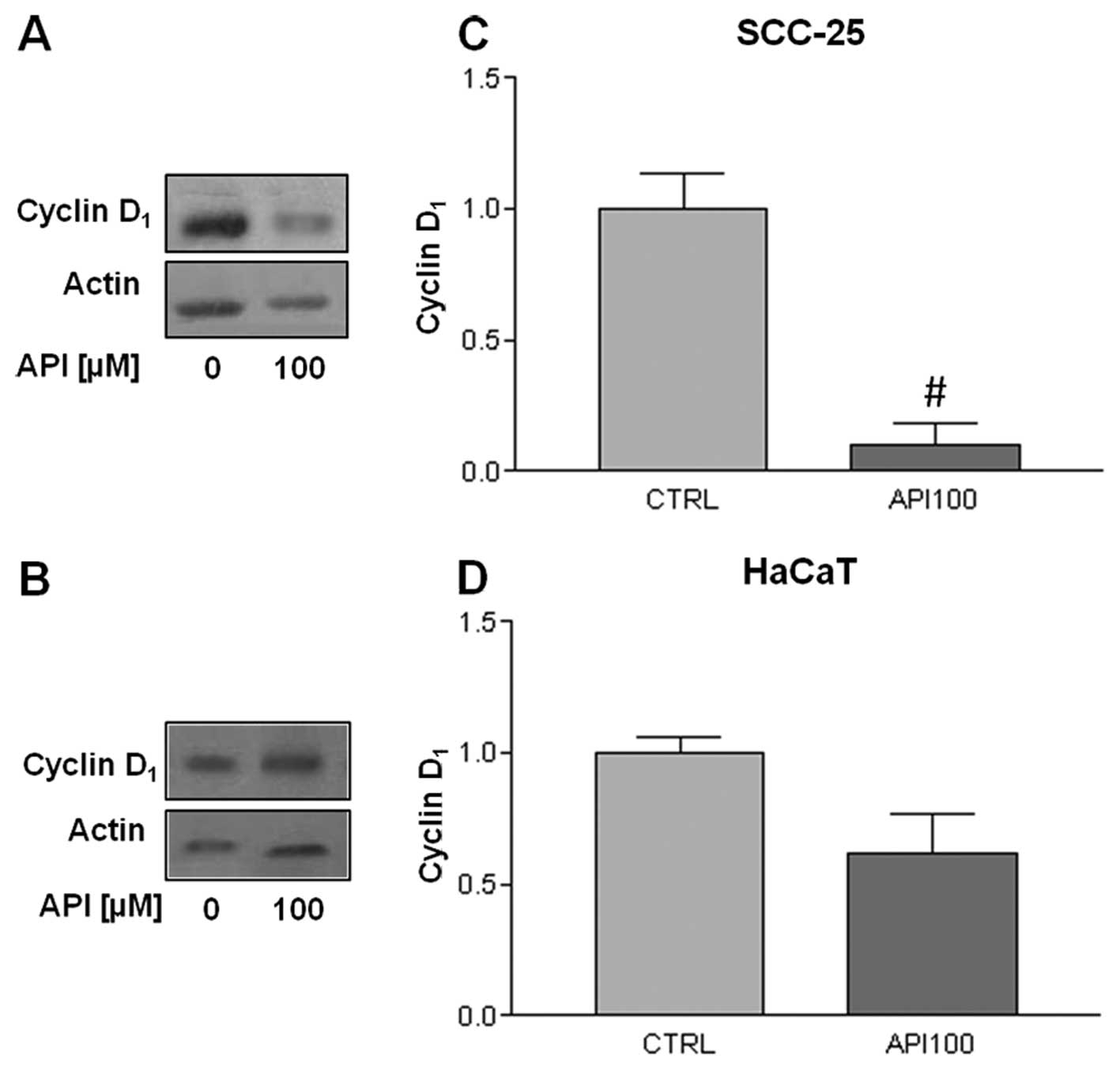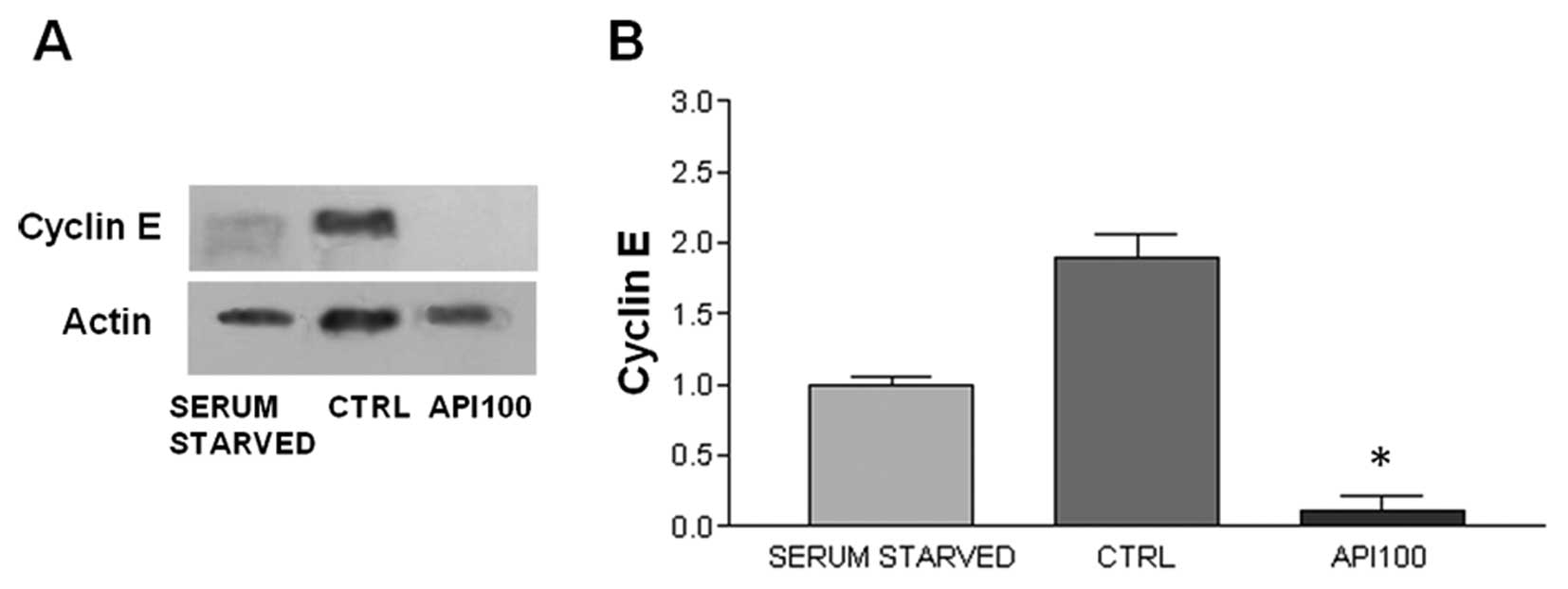|
1.
|
Jemal A, Siegel R, Xu J and Ward E: Cancer
statistics. CA Cancer J Clin. 60:277–300. 2010.
|
|
2.
|
Garavello W, Bertuccio P, Levi F, Lucchini
F, Bosetti C, Malvezzi M, Negri E and La Vecchia C: The oral cancer
epidemic in central and eastern Europe. Int J Cancer. 127:160–171.
2010. View Article : Google Scholar : PubMed/NCBI
|
|
3.
|
Shiboski CH, Schmidt BL and Jordan RC:
Tongue and tonsilar carcinoma: increasing trends in the US
population ages 20–44 years. Cancer. 103:1843–1849. 2005.PubMed/NCBI
|
|
4.
|
Bonifazi M, Malvezzi M, Bertuccio P,
Edefonti V, Garavello W, Levi F, La Vecchia C and Negri E:
Age-period-cohort analysis of oral cancer mortality in Europe: the
end of an epidemic? Oral Oncol. 47:400–407. 2011. View Article : Google Scholar : PubMed/NCBI
|
|
5.
|
Warnakulasuriya S: Living with oral
cancer: epidemiology with particular reference to prevalence and
life-style changes that influence survival. Oral Oncol. 46:407–410.
2010. View Article : Google Scholar : PubMed/NCBI
|
|
6.
|
Rossi M, Garavello W, Talamini R, Negri E,
Bosetti C, Dal Maso L, Lagiou P, Tavani A, Polesel J, Barzan L,
Ramazzotti V, Franceschi S and La Vecchia C: Flavonoids and the
risk of oral and pharyngeal cancer: a case-control study from
Italy. Cancer Epidemiol Biomarkers Prev. 16:1621–1625. 2007.
View Article : Google Scholar : PubMed/NCBI
|
|
7.
|
Shukla S and Gupta S: Apigenin: a
promising molecule for cancer prevention. Pharm Res. 27:962–978.
2010. View Article : Google Scholar : PubMed/NCBI
|
|
8.
|
Patel D, Shukla S and Gupta S: Apigenin
and cancer chemoprevention: progress, potential and promise
(Review). Int J Oncol. 30:233–245. 2007.PubMed/NCBI
|
|
9.
|
Gupta S, Afaq F and Mukhtar H: Selective
growth-inhibitory, cell-cycle deregulatory and apoptotic response
of apigenin in normal versus human prostate carcinoma cells.
Biochem Biophys Res Commun. 287:914–920. 2001. View Article : Google Scholar : PubMed/NCBI
|
|
10.
|
Choi EJ and Kim GH: Apigenin induces
apoptosis through a mtochondria/caspase-pathway in human breast
cancer MDA-MB-453 cells. J Clin Biochem Nutr. 44:260–265. 2009.
View Article : Google Scholar : PubMed/NCBI
|
|
11.
|
Zhong Y, Krisanapun C, Lee SH, Nualsanit
T, Sams C, Peungvicha P and Baek SJ: Molecular targets of apigenin
in colorectal cancer cells: involvement of p21, NAG-1 and p53. Eur
J Cancer. 46:3365–3374. 2010. View Article : Google Scholar : PubMed/NCBI
|
|
12.
|
Xu Y, Xin Y, Diao Y, Lu C, Fu J, Luo L and
Yin Z: Synergistic effects of apigenin and paclitaxel on apoptosis
of cancer cells. PLoS One. 6:e291692011. View Article : Google Scholar : PubMed/NCBI
|
|
13.
|
Kaur P, Shukla S and Gupta S: Plant
flavonoid apigenin inactivates Akt to trigger apoptosis in human
prostate cancer: an in vitro and in vivo study. Carcinogenesis.
29:2210–2217. 2008. View Article : Google Scholar : PubMed/NCBI
|
|
14.
|
Pandey M, Kaur P, Shukla S, Abbas A, Fu P
and Gupta S: Plant flavone apigenin inhibits HDAC and remodels
chromatin to induce growth arrest and apoptosis in human prostate
cancer cells: in vitro and in vivo study. Mol Carcinog. 51:952–962.
2012. View
Article : Google Scholar : PubMed/NCBI
|
|
15.
|
Wei H, Tye L, Bresnick E and Birt DF:
Inhibitory effect of apigenin, a plant flavonoid, on epidermal
ornithine decarboxylase and skin tumor promotion in mice. Cancer
Res. 50:499–502. 1990.PubMed/NCBI
|
|
16.
|
O’Prey J, Brown J, Fleming J and Harrison
PR: Effects of dietary flavonoids on major signal transduction
pathways in human epithelial cells. Biochem Pharmacol.
66:2075–2088. 2003.
|
|
17.
|
Masuelli L, Marzocchella L, Quaranta A,
Palumbo C, Pompa G, Izzi V, Canini A, Modesti A, Galvano F and Bei
R: Apigenin induces apoptosis and impairs head and neck carcinomas
EGFR/ErbB2 signaling. Front Biosci. 16:1060–1068. 2011. View Article : Google Scholar : PubMed/NCBI
|
|
18.
|
Scott RE, Wilke MS, Wille JJ Jr, Pittelkow
MR, Hsu BM and Kasperbauer JL: Human squamous carcinoma cells
express complex defects in the control of proliferation and
differentiation. Am J Pathol. 133:374–380. 1988.PubMed/NCBI
|
|
19.
|
Boukamp P, Petrussevska RT, Breitkreutz D,
Hornung J, Markham A and Fusenig NE: Normal keratinization in a
spontaneously immortalized aneuploid human keratinocyte cell line.
J Cell Biol. 106:761–771. 1988. View Article : Google Scholar : PubMed/NCBI
|
|
20.
|
Komissarova EV and Rossman TG: Arsenite
induced poly(ADP-ribosyl)ation of tumor suppressor P53 in human
skin keratinocytes as a possible mechanism for carcinogenesis
associated with arsenic exposure. Toxicol Appl Pharmacol.
243:399–404. 2010. View Article : Google Scholar
|
|
21.
|
Lu HF, Chie YJ, Yang MS, Lee CS, Fu JJ,
Yang JS, Tan TW, Wu SH, Ma YS, Ip SW and Chung JG: Apigenin induces
caspase-dependent apoptosis in human lung cancer A549 cells through
Bax- and Bcl-2-triggered mitochondrial pathway. Int J Oncol.
36:1477–1484. 2010.PubMed/NCBI
|
|
22.
|
Abu-Yousif AO, Smith KA, Getsios S, Green
KJ, Van Dross RT and Pelling JC: Enhancement of UVB-induced
apoptosis by apigenin in human keratinocytes and organotypic
keratinocyte cultures. Cancer Res. 68:3057–3065. 2008. View Article : Google Scholar : PubMed/NCBI
|
|
23.
|
Ujiki MB, Ding XZ, Salabat MR, Bentrem DJ,
Golkar L, Milam B, Talamonti MS, Bell RH Jr, Iwamura T and Adrian
TE: Apigenin inhibits pancreatic cancer cell proliferation through
G2/M cell cycle arrest. Mol Cancer. 5:762006. View Article : Google Scholar : PubMed/NCBI
|
|
24.
|
Lepley DM, Li B, Birt DF and Pelling JC:
The chemopreventive flavonoid apigenin induces G2/M arrest in
keratinocytes. Carcinogenesis. 17:2367–2375. 1996. View Article : Google Scholar : PubMed/NCBI
|
|
25.
|
McVean M, Weinberg WC and Pelling JC: A
p21(waf1)-independent pathway for inhibitory phosphorylation of
cyclin-dependent kinase p34(cdc2) and concomitant G(2)/M arrest by
the chemopreventive flavonoid apigenin. Mol Carcinog. 33:36–43.
2002. View Article : Google Scholar : PubMed/NCBI
|
|
26.
|
Parker LL and Piwnica-Worms H:
Inactivation of the p34cdc2-cyclin B complex by the human WEE1
tyrosine kinase. Science. 257:1955–1957. 1992. View Article : Google Scholar : PubMed/NCBI
|
|
27.
|
Casagrande F and Darbon JM: Effects of
structurally related flavonoids on cell cycle progression of human
melanoma cells: regulation of cyclin-dependent kinases CDK2 and
CDK1. Biochem Pharmacol. 61:1205–1215. 2001. View Article : Google Scholar : PubMed/NCBI
|
|
28.
|
Lepley DM and Pelling JC: Induction of
p21/WAF1 and G1 cell-cycle arrest by the chemopreventive agent
apigenin. Mol Carcinog. 19:74–82. 1997. View Article : Google Scholar : PubMed/NCBI
|
|
29.
|
Shintani S, Mihara M, Nakahara Y, Kiyota
A, Ueyama Y, Matsumura T and Wong DT: Expression of cell cycle
control proteins in normal epithelium, premalignant and malignant
lesions of oral cavity. Oral Oncol. 38:235–243. 2002. View Article : Google Scholar : PubMed/NCBI
|
|
30.
|
Yamada S, Sumrejkanchanakij P, Amagasa T
and Ikeda MA: Loss of cyclin E requirement in cell growth of an
oral squamous cell carcinoma cell line implies deregulation of its
downstream pathway. Int J Cancer. 111:17–22. 2004. View Article : Google Scholar : PubMed/NCBI
|



